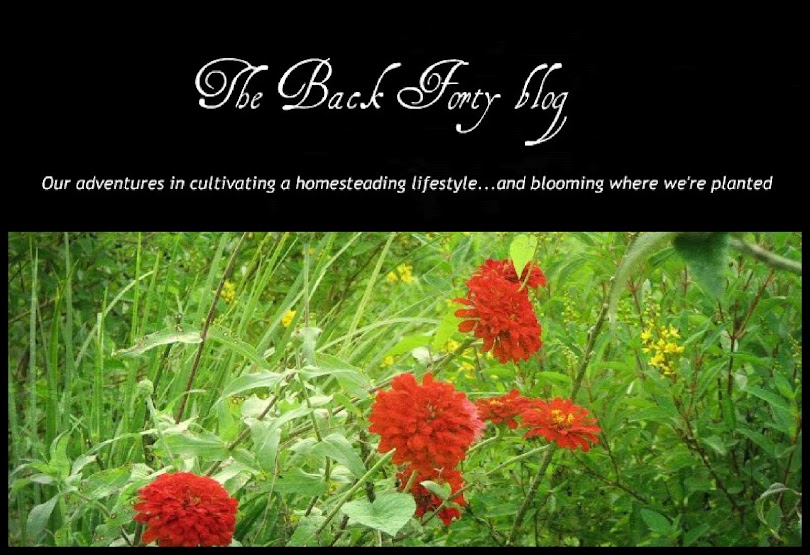 |
| Leaf types from top right, clockwise: Jujube, Gynura procumbens, Guava, Moringa , Narrow Leaf Plantago (plantain), Dollarweed, Nopal cactus pads |
It's hard to believe winter's upon us and yet outside in the backyard everything is still green. But so grows Florida! The papaya tree now has 16 fat and heavy fruits winding up its stem, and counting...what fun! The second one has smaller round fat ones and seems to be trying to keep up.
What's new in our neck of the woods? Well, not enough new news to keep me blathering on here too often, since I just don't want to come here to fill blog space. But my excitement comes in small things, and these days it's the plants and learning so many uses for their different parts. Our focus has been plants that thrive in this climate without a lot of fuss, so that is a marriage of plants that usually get categorized separately into categories such as "fruit trees," "perennials," "culinary herbs," "medicinal herbs," and of course the one that makes me chuckle..."weeds." (We so appreciate our native plants that I get more excited about weeds these days than I do a garden center full of exotics. One gal's weeds are another gal's wonder plants!) I do love me a native plant. I also love the proven immigrant plants that over the years thrived right along side the native ones, as long as they don't bully them.
I probably don't write enough here about our harvests of leaves and greens because I still don't think of my backyard as a garden as such...until I walk under the moringa trees and pick some chaya leaves or guava leaves or other things I'm beginning to add to our repertoire of natural food and medicine. Learning to USE these things has been a process, and it continues. I'm just not used to the "un-garden"...one not in raised beds or tilled plots or rows.
But the good news is that so many common trees have leaves with edible uses, or medicinal. So do "weeds," and so do some plants with a lot of staying power.
 |
| Pine needles harvested for making a mock balsamic vinegar and pine needle tea |
My computer ate my Dummy-proof five option photo editing program somewhere along the line. Or maybe it was so out of date it just retired early, ha! But I'm using Picknik.com now and I'm having fun with the effects. But back to the leaves...
One day I looked around our yard, counted the sorts of trees and shrubs we have (some we planted, others that are in the woods that border our property) and then researched any known food or medicinal uses for each of them. The results were SO exciting! Everything from pine trees to citrus to landscaping shrubs, and nearly all of them had some traditional use somewhere in the world as a food, a spice, a supplement, or a medicinal. It has caused me to really stop and study these leaves I walk by so casually every day...inside of each of them is an array of nutrients I'd never be able to afford were I to try to fill my medicine chest or spice rack with the individual isolates.
Many are wonderful as teas. Others are gentle herbal supports. Others are powerful stimulant herbals. Others are tonics and digestives. Others make wonderful vinegars, syrups, flavorings. Others contribute their benefits when made into balms, lotions, compresses, poultices.
 |
| Just picked from the backyard, my food and art: Dollarweed, Plantain leaves, Pine needles. Happiness in a basket! |
As we nibble our way through the newness of the backyard greens, I may post here about some of them.
We are continuing to juice, mostly carrots and apples, as a healing change to our diet and a way to get raw foods when we're all salad-ed out. For some reason the juice has a more noticeable effect, and maybe a quicker one, than just the smoothies or raw salads, so we're doing a combination of all those alongside a small percentage of cooked greens and soups. Lots of fruits and greens. I am REALLY trying to get rid of this diabetes. We're drinking many supportive teas, some for specific benefits and others just because we like them. When I say tea, I'm meaning herbals, usually loose herbs boiled and steeped, or infusions left to concentrate for a few hours before drinking (I learned that one from a Susun Weed video, and it really seems to get the most use for the herb that way).
I'm still making up some batches of tinctures, but I'd like a book as reference for the specific herbs so I have a better idea of the correct proportions of herb to alcohol. One step at a time :)
And that leads me to my last quick mention...I've decided I want to become a master herbalist. I've had a great deal of fun researching so many of our plants for our own uses, it just dawned on me I'd love to delve deeper as well as actually utilize a lot of what we've learned. Besides the fun aspect, I believe good health is within the grasp of those with very little cash or savings and is crucial for the times we're in. Learning and utilizing traditional herbalism AND lesser-known (or just overlooked) edibles is a backyard pantry whose ends are health...and a different kind of prosperity and abundance.
This will be a long-term thing, so why not enjoy learning beside so many of the great herbalists who've made their wisdom and resources available? If anyone can recommend some good school or program with distance-learning access, I'd love to know more!
What's going on in your neck of the woods...and do you folks in the Upper 47 have snow yet? Ah, the smell of fir trees and icy air! :) Stay warm!
Blessings from us to you,
Robbyn
